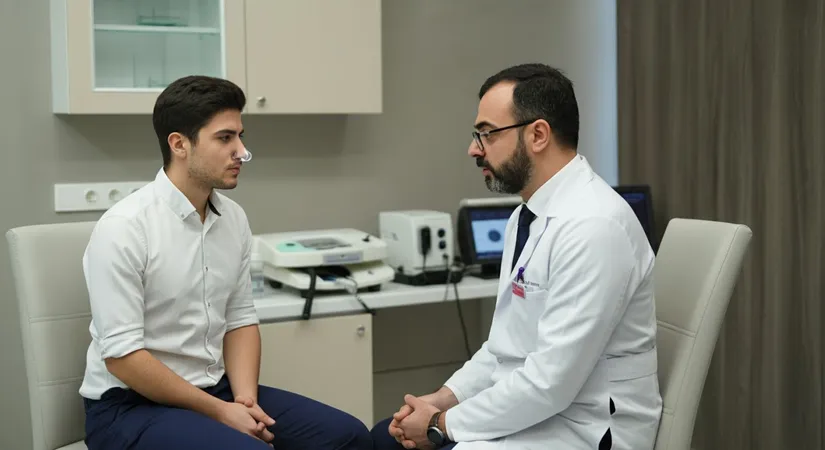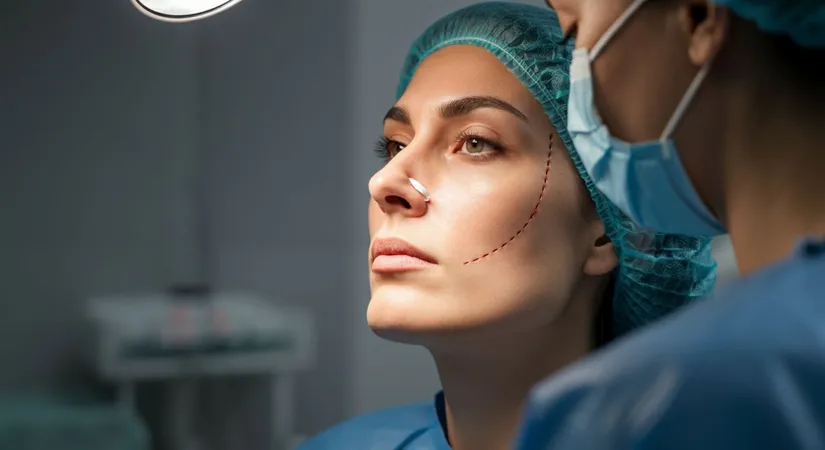Closed Septoplasty: Breathe Easier, Live Better
Discover how closed septoplasty can improve your breathing and quality of life. A minimally invasive procedure with quick recovery.
Closed Septoplasty: Breathe Easier, Live Better
Experiencing difficulty in breathing due to a deviated septum can severely impact one's quality of life. Closed septoplasty offers a minimally invasive option to correct nasal blockages, enabling you to breathe easier and enhance your overall well-being. In this guide, we explore the nuances of closed septoplasty, its benefits, the preparation required, recovery expectations, and how it compares to open septoplasty.
Understanding Closed Septoplasty: A Comprehensive Guide
Benefits of Closed Septoplasty
Closed septoplasty offers several advantages over open procedures, primarily due to its minimally invasive nature. This technique involves making incisions within the nostrils, which eliminates visible scarring and often results in a quicker recovery time. Patients typically experience less post-operative discomfort, allowing them to return to normal activities sooner. For instance, a study found that patients undergoing closed septoplasty returned to work on average three days earlier than those who had open procedures.
Key Features of Closed Septoplasty
- Minimally invasive with no external scars, enhancing cosmetic outcomes.
- Reduced recovery time, allowing patients to resume daily activities faster.
- Lower risk of complications such as infection and bleeding.
These features make closed septoplasty a preferred choice for individuals seeking nasal septum correction without the drawbacks of more invasive surgeries.
Steps Involved in Closed Septoplasty
- Initial consultation and assessment to determine the extent of septum deviation.
- Surgical procedure performed under local or general anesthesia, with incisions made inside the nostrils.
- Post-operative care and follow-up appointments to ensure proper healing and optimal results.
Understanding these steps can help patients prepare for the procedure and set realistic expectations for their recovery journey.

Closed Septoplasty vs Open Septoplasty: Key Differences
Understanding the Surgical Approaches
Closed septoplasty and open septoplasty are two distinct surgical approaches for correcting a deviated nasal septum. The choice between them often depends on the complexity of the deviation and the surgeon's expertise. Closed septoplasty is less invasive, involving incisions made inside the nostrils, which results in no visible scarring. This method is typically preferred for simpler cases where the deviation is not severe.
Advantages of Closed Septoplasty
- Minimally invasive with no external scars, enhancing cosmetic outcomes.
- Reduced recovery time, allowing patients to resume daily activities faster.
- Lower risk of complications such as infection and bleeding.
These features make closed septoplasty a preferred choice for individuals seeking nasal septum correction without the drawbacks of more invasive surgeries.
Steps Involved in Closed Septoplasty
- Initial consultation and assessment to determine the extent of septum deviation.
- Surgical procedure performed under local or general anesthesia, with incisions made inside the nostrils.
- Post-operative care and follow-up appointments to ensure proper healing and optimal results.
Understanding these steps can help patients prepare for the procedure and set realistic expectations for their recovery journey.
Recovery and Outcomes
Recovery from closed septoplasty is generally quicker compared to open septoplasty. Patients often experience less swelling and discomfort, allowing for a faster return to daily activities. For example, many patients report being able to resume work within a week. In contrast, open septoplasty, which involves an external incision, may require a longer recovery period due to increased swelling and the need for more extensive healing.
Considerations for Choosing the Right Procedure
- Evaluate the severity of the septum deviation with your surgeon.
- Discuss the potential recovery times and outcomes for each approach.
- Consider personal preferences regarding scarring and recovery speed.
These considerations can guide patients in making an informed decision about which septoplasty method aligns best with their needs and lifestyle.

Preparing for Closed Septoplasty: Essential Tips
Key Preparations for a Successful Septoplasty
Preparing for closed septoplasty involves several important steps to ensure a smooth procedure and recovery. First, consult with your healthcare provider to understand the specifics of the surgery and any potential risks. This consultation is crucial for setting realistic expectations and addressing any concerns you might have.
Next, follow pre-surgical instructions carefully. This often includes avoiding certain medications that could increase bleeding risk, such as aspirin or non-steroidal anti-inflammatory drugs. Additionally, maintaining a healthy diet and good nutritional status can significantly impact your recovery. A balanced diet rich in vitamins and minerals supports healing and boosts your immune system.
Mental and Physical Preparation Tips
- Engage in relaxation techniques like meditation to reduce pre-surgery anxiety.
- Ensure adequate sleep in the weeks leading up to the surgery for optimal recovery.
- Arrange for post-surgery support, such as transportation and assistance at home.
These preparations not only help in managing stress but also ensure you have the necessary support system in place for a smooth recovery.
Steps to Enhance Recovery Outcomes
- Follow all post-operative care instructions provided by your surgeon.
- Attend all follow-up appointments to monitor healing progress.
- Gradually resume physical activities as advised by your healthcare provider.
By adhering to these steps, you can enhance your recovery outcomes and return to your daily routine more swiftly.

Recovery After Closed Septoplasty: What to Expect
Managing Postoperative Symptoms Effectively
Postoperative recovery from closed septoplasty is generally swift, with most patients returning to daily activities within a week. Initial mild swelling and discomfort are common but subside over a few days. Proper care, including saline rinses and avoiding physical strain, supports optimal healing.
Effective Recovery Strategies
- Use saline nasal sprays to keep the nasal passages moist and aid healing.
- Avoid strenuous activities and heavy lifting to prevent complications.
- Sleep with your head elevated to reduce swelling and promote drainage.
These strategies can significantly enhance recovery, ensuring a smoother transition back to normal activities.
Steps to Ensure a Smooth Recovery
- Follow your surgeon's post-operative instructions meticulously.
- Attend all scheduled follow-up appointments to monitor progress.
- Gradually reintroduce physical activities as advised by your healthcare provider.
By adhering to these steps, patients can optimize their recovery outcomes and minimize the risk of complications.
Minimally Invasive Closed Septoplasty: A Path to Better Breathing
Ensuring Optimal Recovery After Closed Septoplasty
Frequently Asked Questions
What is closed septoplasty and how does it differ from open septoplasty?
What are the benefits of choosing closed septoplasty for nasal septum correction?
How should I prepare for closed septoplasty surgery?
What can I expect during the recovery period after closed septoplasty?
How does closed septoplasty recovery time compare to open septoplasty?
Discover the path to 'Healthy Beauty' with estethica's expert care. Call now for your free consultation and take the first step towards a more confident you!
📞 Call for Your Free Consultation